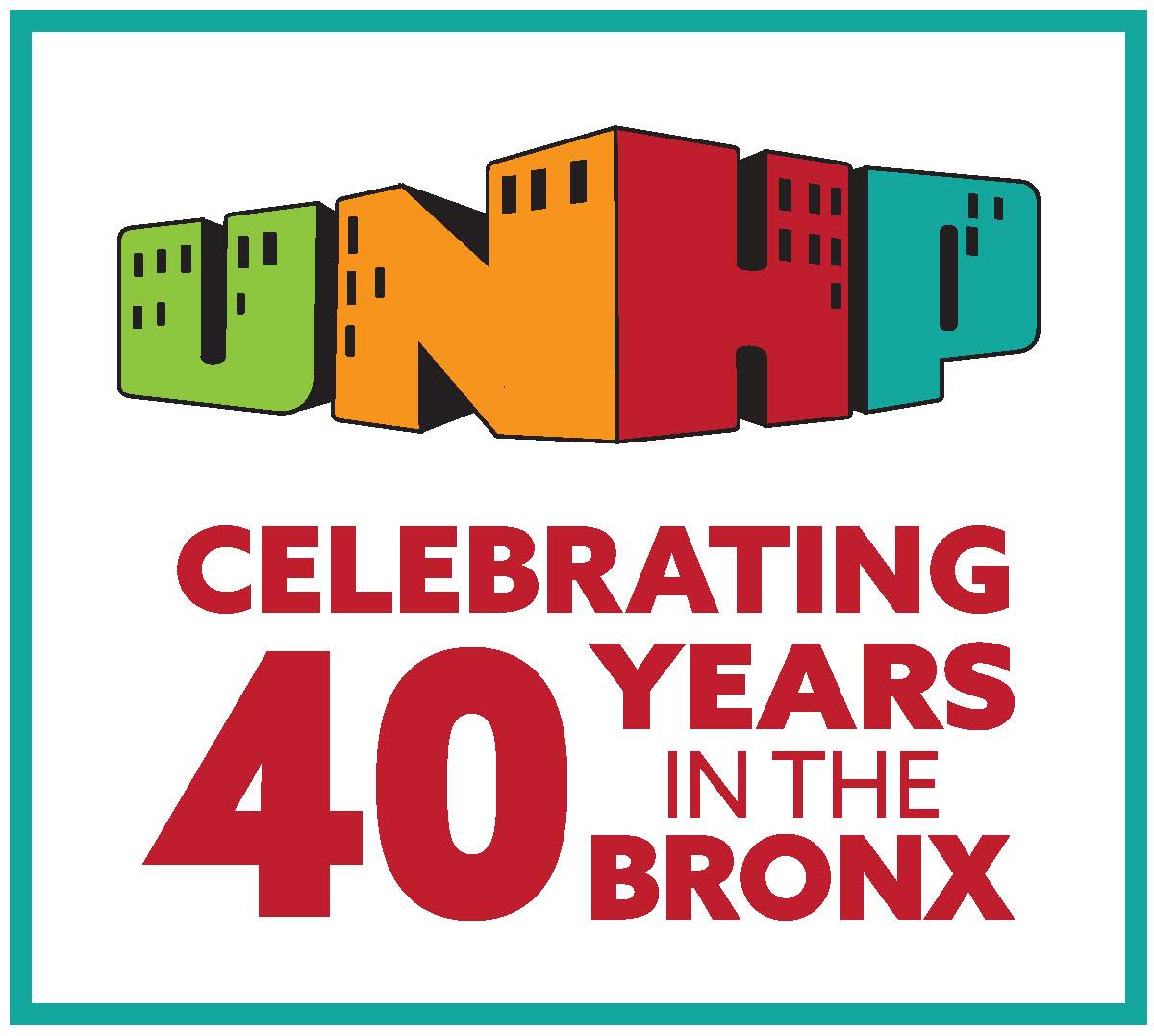Housing as Home and Commodity: Part 1
Housing, especially rental housing in New York City, exists with two main purposes: to provide homes for people and families, and to be bought, sold and rented as commodities. Most of the battles around housing arise in the tension between these two purposes. Our two part blog post on the state of the affordability crisis in the Bronx and New York City begins by looking at updated data on what it takes families to afford the rent and the struggles encountered as wages continue to slide and rents continue to jump. Tomorrow in Part Two, we will focus on prices and profitability of housing from the investor side, and a huge surge (bubble?) in the market.
Both posts are takes on data we presented to more than two dozen top multifamily lenders last month at Enterprise Community Partners along with the City's Department of Housing Preservation and Development. Many of these charts are updated versions from our influential 2013 report, Nowhere to Go: A crisis of affordability in the Bronx.
We begin by looking at Median Household Income across the five boroughs going back to the 1990 census. Other than Manhattan, incomes have not kept pace with inflation, and there has been a steady decline in the Bronx which continues to have the lowest incomes in the City. This is part of a national trend of stagnating wages, though the effects are more acute in places like the Bronx.
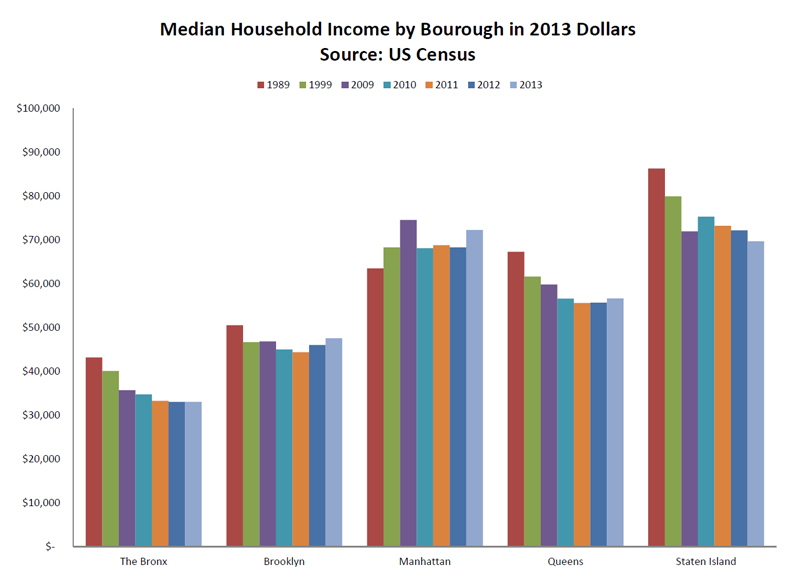
New arrivals to the Bronx also make less than current residents. This is true both for those families who moved from another county within New York State, and for immigrants. So while the mainstream narrative may be about higher income earners moving to the Bronx, the data does not bear this out. Of course, just because gentrification isn't playing out in the way the media likes to portray it, there is still tremendous concern for displacement as rents rise. Just the thought of gentrification can feed speculation and lead to displacement.
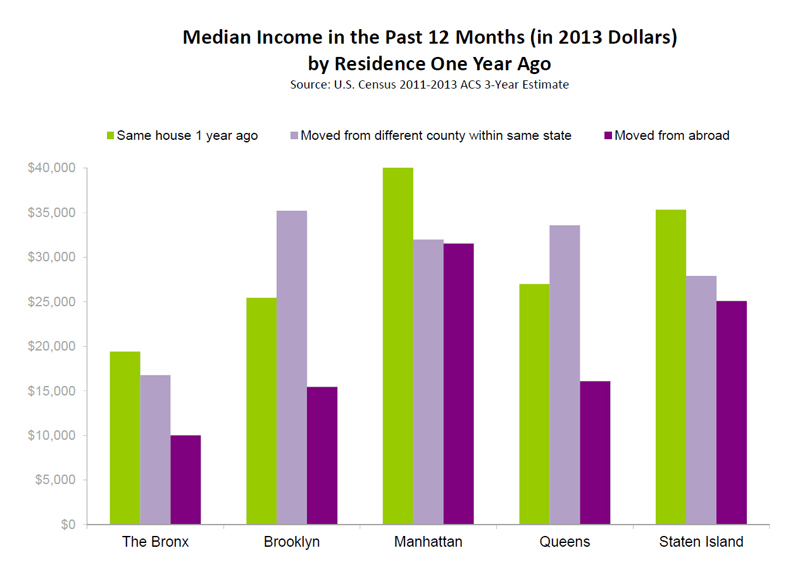
One main explanation for the income situation in the Bronx has to do with low wages for service occupation workers. This map shows the growing concentration of service workers in the west Bronx. Wages for retail, food service, security guards, home health aides, tourism, hotel and office cleaning staff continue to make it difficult for workers who ensure the City runs well to find an affordable place to live within the five boroughs. A rise in wages for service workers would go a long way to ensuring their ability to live in the City they work in.
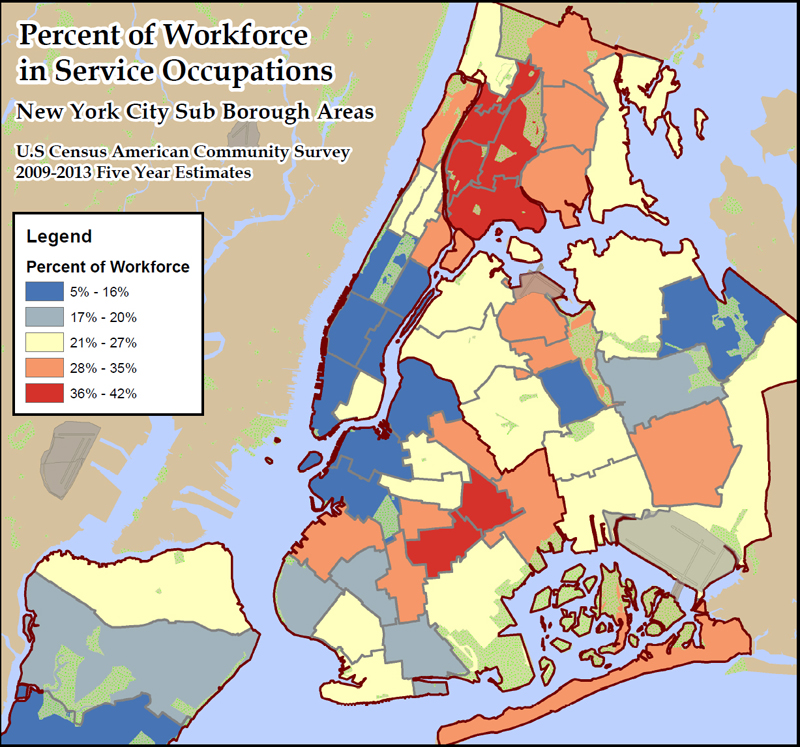
While wages have stagnated or declined, rents have continued to skyrocket. This data from 2011 shows the degree to which rents had risen over inflation across the City. New data for 2014 will be out later this year, and it is all but certain that rents have continued to increase much faster than inflation in recent years.
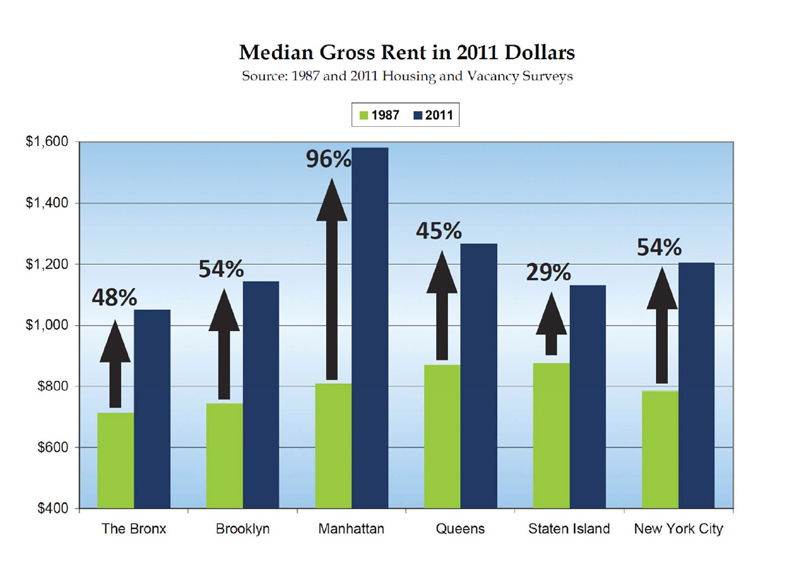
It’s no surprise that rising rents and stagnating wages will result in an affordability crisis. What may be surprising is the concentration of households who spend more than half of their income on rent in the Bronx. People priced out of other boroughs continue to come to the Bronx, the borough with the lowest asking rents. Yet rents are rising dramatically here as well, and the result is the largest concentration of families living paycheck to paycheck in the nation.
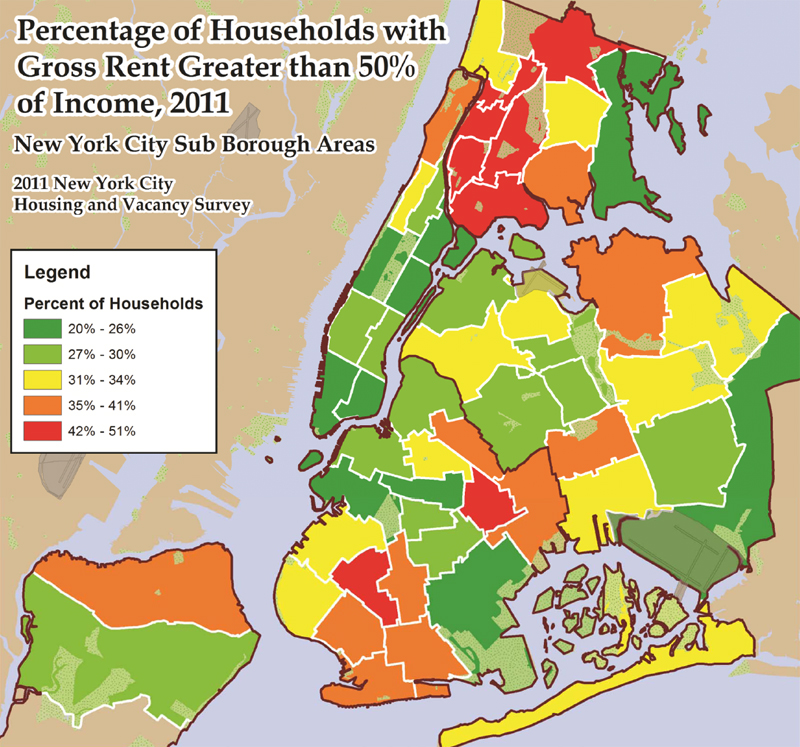
The affordability crisis has also led to a rise in the number of residential evictions and possessions in the Bronx. According to accounts from numerous owners and managers, more and more working families face eviction because their incomes are not sufficient to meet the monthly rent bill.
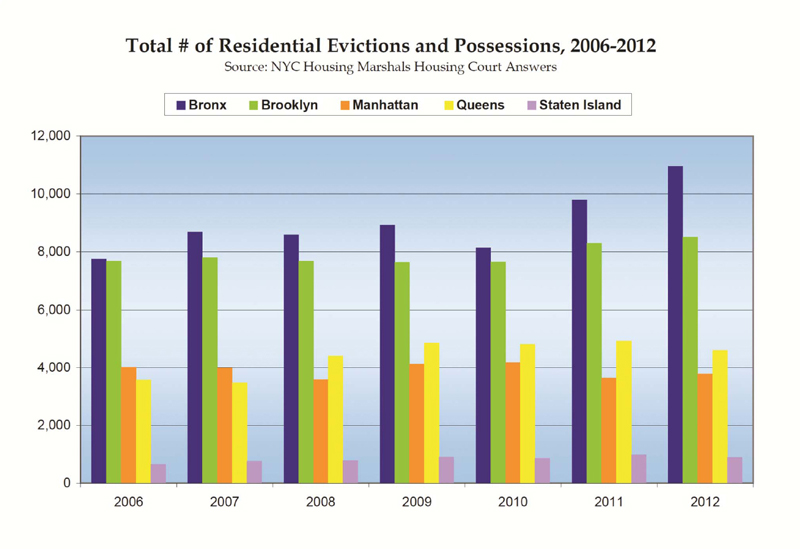
Still, many other families are able to make ends meet through creative measures. These Rooms For Rent signs proliferate throughout the Bronx. In a recent visit to an ESL class run by a local nonprofit, a majority of students said they lived in a shared apartment.

Census data backs up these accounts. The percent of renter households living in crowded conditions continues to rise, and is the highest in the Bronx, at all of the levels of overcrowding captured in the Census, with impact on both privacy for families, and on the operating and maintenance expenses for a building.
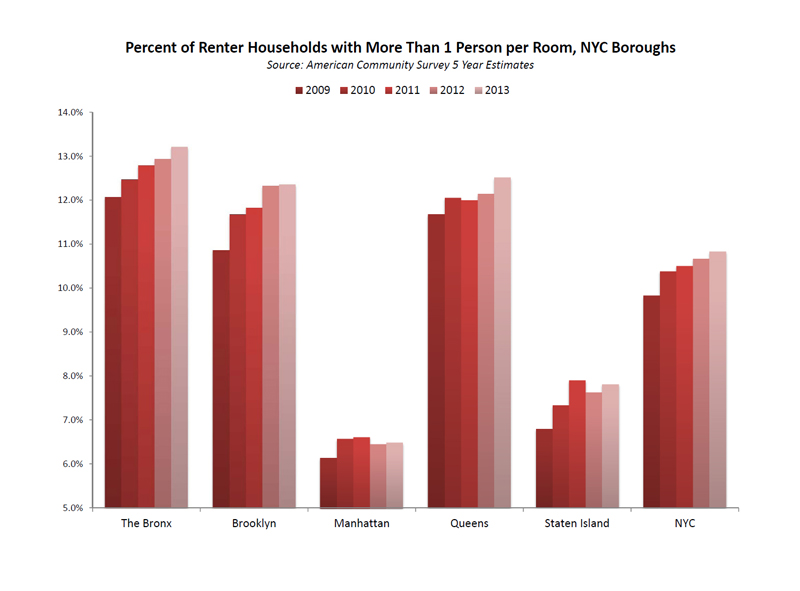
While the data can paint a bleak picture, consider that the people of the Bronx operate with creativity and ingenuity to make the rent, not unlike the Rent Parties of Harlem 60-90 years ago. And the opportunity for organizing around wage increases and tenant protections abound.
Up tomorrow, the update on prices, profitability, and quality of the housing stock, and what questions this all leaves us with.
